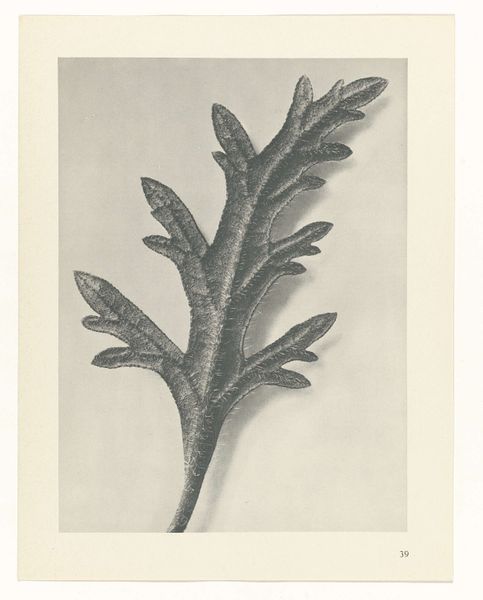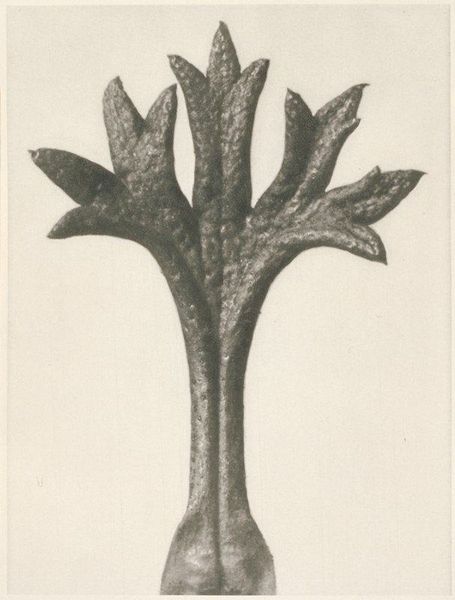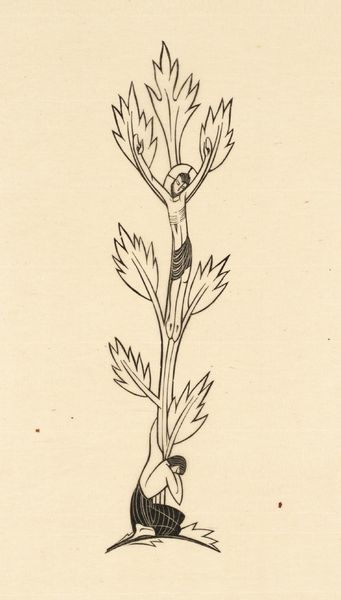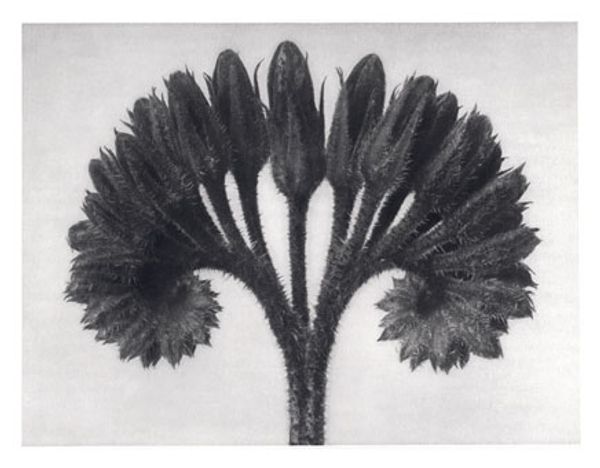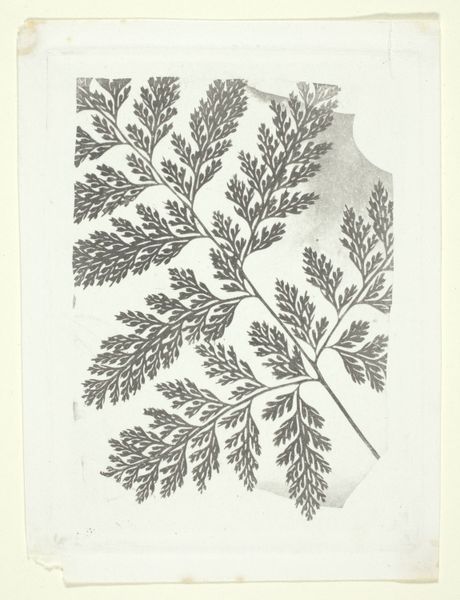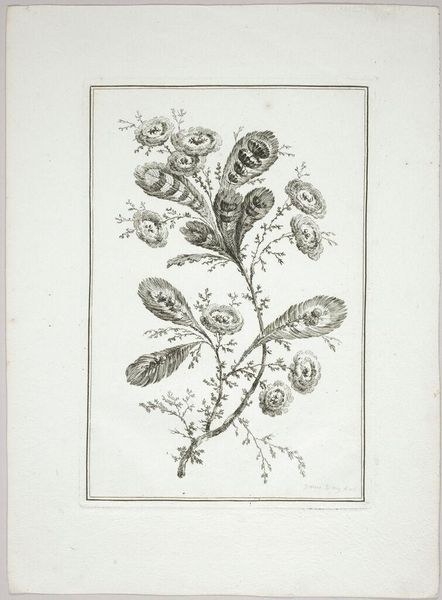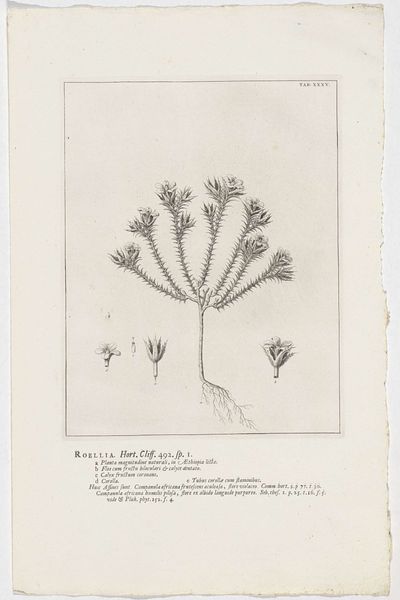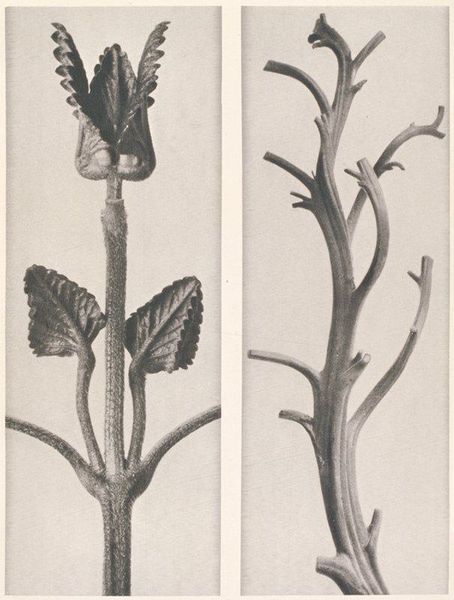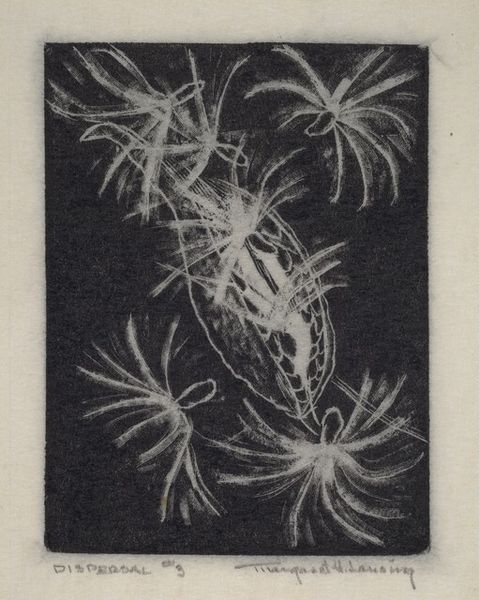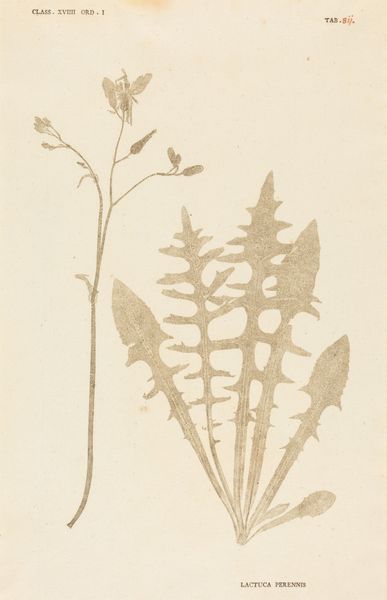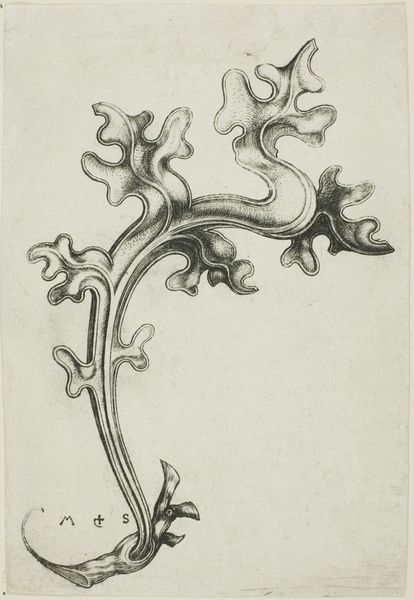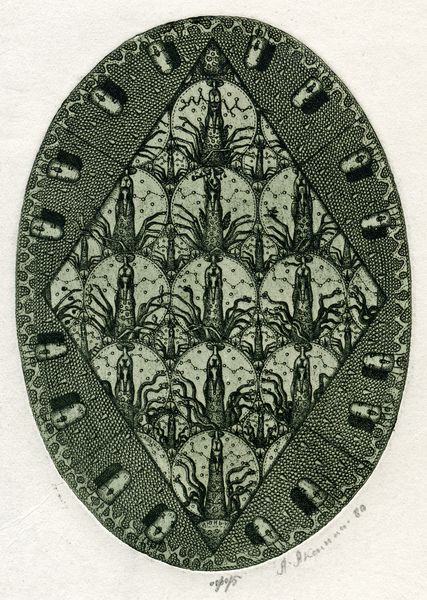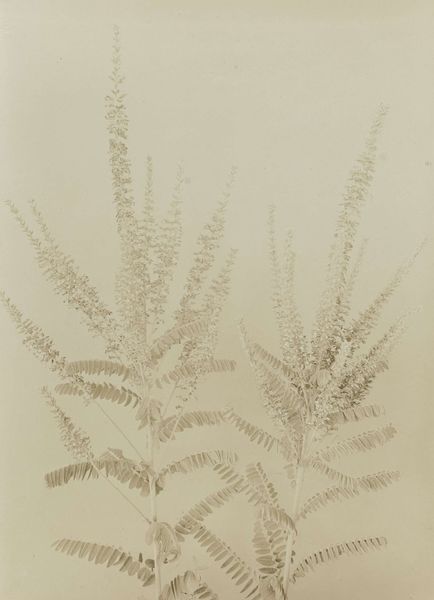
photogravure, photography
#
pencil drawn
#
photogravure
#
photography
#
pencil drawing
#
realism
Dimensions: 10 1/4 x 7 7/16 in. (26.04 x 18.89 cm) (image)12 5/16 x 9 3/8 in. (31.27 x 23.81 cm) (sheet)
Copyright: No Copyright - United States
Karl Blossfeldt made this photogravure of Achillea Umbellata, or Yarrow, using photography to magnify the plant's natural forms, revealing textures and patterns we might otherwise miss. It’s all about process, right? How do we slow down and really *see*? The velvety texture of the Yarrow is amazing here, you can almost feel the plant's surface. Look closely at the tonal range - it’s really narrow, very subtle and yet so detailed. The way the light catches the tiny hairs on the leaves... it's like Blossfeldt is sculpting with light. This isn't just documentation; it's a deeply felt engagement with the material world. It has a very sculptural quality, that maybe reminds me of some of the work of Cy Twombly. Blossfeldt's approach reminds us that art isn't just about grand gestures; it's about paying attention, finding beauty in the overlooked, and embracing the endless possibilities of the process.
Comments
minneapolisinstituteofart about 2 years ago
⋮
Blossfeldt’s works were primarily used as teaching tools and were brought to public attention in with his first publication Urformen der Kunst (Art Forms in Nature). Published in 1928 when Blossfeldt was a professor of applied art, Urformen der Kunst quickly became an international bestseller and in turn, made Blossfeldt famous almost overnight. His contemporaries were impressed by the abstract shapes and structures that he revealed in nature. Soon regarded as a seminal book on photography, Blossfeldt’s objective and highly detailed imagery was praised by German philosopher and cultural critic Walter Benjamin, who declared that Blossfeldt ‘has played his part in that great examination of the inventory of perception, which will have an unforeseeable effect on our conception of the world’. Benjamin compared him to the pioneers of New Objectivity, such as Moholy-Nagy, also seen in this exhibition, and ranked his achievements alongside great photographers such as August Sander.
Join the conversation
Join millions of artists and users on Artera today and experience the ultimate creative platform.
